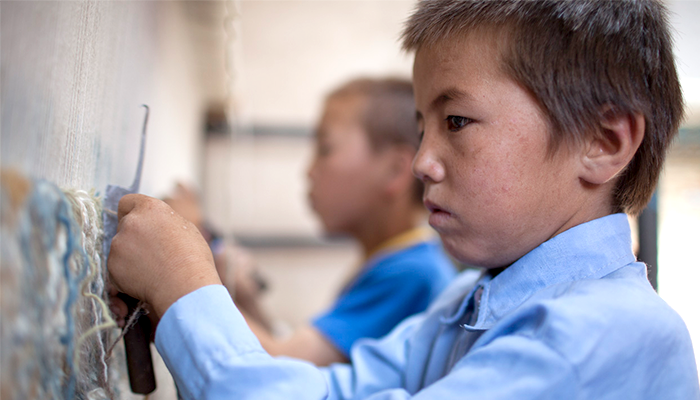Clean Up Supply Chains
Even the most well-intentioned brands find exploitation in their supply chains. And now, in this era of fast fashion—with hurried timelines for new styles to hit shelves—the situation is getting worse. GoodWeave establishes clear and rigorous standards, and we verify compliance by regularly mapping and inspecting factories, worksites and facilities all the way down to cottage industry and individual homes. These inspections—which are random, unannounced, and frequent—lead us to exploited children and serve as a powerful deterrent to bad labor practices.

Inspection and monitoring is part of our larger set of programming designed to remove child labor from supply chains, along with underlying circumstances that lead to child labor in the first place. Ultimately, partnering with GoodWeave motivates producers and buyers to adopt new business norms. To this end, our work in supply chains combines standard-setting, supply-chain mapping, identification of outsourced and multi-tiered production, remediation and prevention. Each component strengthens the others.
In the carpet and home textile sectors, the GoodWeave Standard establishes detailed requirements that producers must meet in order to demonstrate that their supply chains are free from child, forced, and bonded labor at every level of production in order to receive the GoodWeave label. Certification criteria are rooted in three non-negotiable principles:
- No child labor is allowed,
- No forced or bonded labor is allowed, and
- Work conditions are documented and verifiable.
Additional Progress Principles address a broader set of labor rights and environmental issues, but are not currently required for companies to receive the right to use the GoodWeave label.
Through our deep work in supply chains, we reach hidden corners of outsourced manufacturing that other organizations are unable to reach. Many of these—including village-based cottage industries, urban-slum workshops, and homes—are the sites where working conditions are the most unregulated, and where abuse is most prevalent. Our team identifies more than 90 percent of total cases of child labor and modern slavery in these parts of the production chain.
